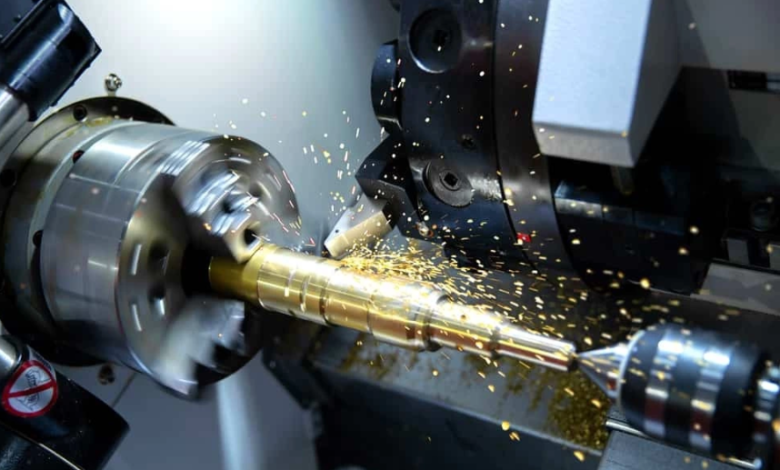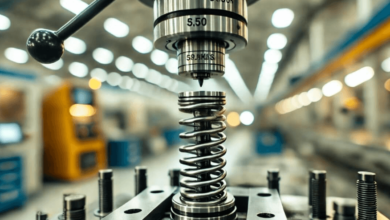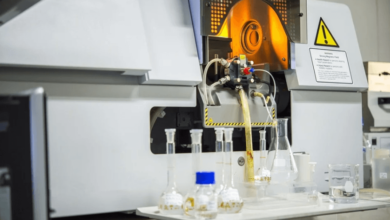Precision Solutions with cnc turning service

In the ever-evolving world of manufacturing, precision is not a luxury—it’s a necessity. Industries that demand high tolerance, complex geometry, and efficient mass production depend heavily on machining technologies. Among these, cnc turning service has emerged as a cornerstone for creating high-quality, cylindrical, and symmetrical components.
From aerospace to electronics, this service provides consistent, cost-effective solutions that meet even the most demanding requirements. In this article, we dive deep into what cnc turning service entails, why it’s crucial for modern manufacturing, and how it helps businesses stay competitive in a high-demand market.
What Is cnc turning service?
cnc turning service refers to the automated machining process where a lathe rotates a workpiece while a stationary cutting tool removes material to shape the part. The acronym “CNC” stands for Computer Numerical Control, meaning the entire operation is controlled by software programs written in G-code, ensuring each pass of the tool is accurate down to a fraction of a millimeter.
Unlike traditional manual lathes, CNC lathes perform these operations with remarkable precision, repeatability, and speed. They are often used to create cylindrical parts such as pins, shafts, screws, and bushings—although modern multi-axis CNC machines can also produce more complex geometries.
Why cnc turning service Is a Manufacturing Essential
The rise of cnc turning service can be attributed to several compelling benefits it offers:
1. Extreme Precision
Tolerances as tight as ±0.001 mm are common in CNC turning. Such accuracy is critical in sectors like medical, aerospace, and automotive, where every micron counts.
2. Consistency in Production
Once a turning program is set and tested, the CNC machine can replicate the same part thousands of times with zero deviation. This is invaluable for batch production.
3. Faster Production Cycles
CNC lathes operate at high rotational speeds, and many are equipped with bar feeders and automated tool changers. This setup ensures minimal downtime and optimal productivity.
4. Low Waste and Cost-Efficiency
Thanks to intelligent programming and precise material removal, cnc turning service reduces scrap and optimizes raw material usage. This leads to direct cost savings.
5. Flexibility in Design
With multi-axis capabilities, modern CNC machines can produce complex parts in one setup. Features like threading, grooving, knurling, and boring can be done without repositioning the workpiece.
See also: What Is Geo Grid: A Guide to Soil Stabilization Technology
Materials Commonly Used in cnc turning service
Another major advantage of CNC turning is its versatility in handling different materials. These include:
- Aluminum – Lightweight and corrosion-resistant; widely used in automotive and aerospace.
- Stainless Steel – Durable, rust-resistant, and commonly used in medical and food-grade applications.
- Brass – Excellent for precision and aesthetic components.
- Titanium – High strength-to-weight ratio, ideal for implants and high-performance parts.
- Plastics – PEEK, Delrin, Nylon, and other engineered plastics for electronics and medical devices.
The right cutting speeds, tool coatings, and coolant systems are used depending on the material, ensuring both tool longevity and perfect finishes.
Industries That Rely on cnc turning service
The applications for cnc turning service are widespread, spanning almost every sector that requires high-precision components. Here are just a few industries that rely on CNC turning:
- Aerospace: Turbine blades, engine housings, and actuator components
- Automotive: Transmission shafts, pistons, fasteners, and spacers
- Medical: Orthopedic pins, bone screws, surgical instruments
- Electronics: Connectors, heat sinks, sensor enclosures
- Defense: Firearm parts, surveillance system housings, radar components
- Industrial Equipment: Bearings, rollers, pulleys, and custom fixtures
Each of these industries depends on CNC turning for both prototyping and mass production due to its speed, precision, and ability to handle complex specifications.
The cnc turning Process: Step-by-Step Overview
Here’s what a typical cnc turning service process looks like:
- Design & Engineering
A CAD (Computer-Aided Design) file is created based on part requirements. This is then transferred to a CAM (Computer-Aided Manufacturing) software to generate G-code. - Machine Setup
Operators load the right material, insert the proper cutting tools, and input the G-code into the CNC machine. - Turning Operation
The machine rotates the material while the cutting tool shapes the part. Depending on the complexity, live tooling may also be used for drilling, tapping, or milling during the turning cycle. - Finishing
Deburring, polishing, anodizing, or coating may be applied depending on the application. - Quality Inspection
Parts are measured using micrometers, CMMs (Coordinate Measuring Machines), or optical comparators to verify dimensions and tolerances.
Key Features to Look for in a cnc turning service Provider
Choosing the right service provider can make or break a project. Here are some factors to consider:
- Machine Capabilities: Look for providers with advanced CNC lathes, preferably with multi-axis functionality and live tooling.
- Experienced Technicians: Skilled operators and programmers are essential for optimizing tool paths and ensuring quality.
- Quality Control Standards: ISO 9001 or AS9100 certifications are strong indicators of a provider’s commitment to quality.
- Material Expertise: The provider should be able to handle the material grade and specifications required for your industry.
- Support and Communication: Fast quotes, technical feedback, and responsive communication throughout the project cycle are valuable.
Trends and Innovations in cnc turning service
The CNC turning service industry is not standing still. Here are some innovations that are pushing the field forward:
- Smart Manufacturing Integration
CNC machines are now being integrated with IoT (Internet of Things) sensors for real-time monitoring, predictive maintenance, and productivity tracking. - AI-Powered Optimization
Artificial Intelligence is being used to analyze machining patterns and recommend toolpath optimizations for faster and more efficient turning. - Hybrid Machining
Some systems now combine CNC turning with additive manufacturing (3D printing) to produce parts that were previously impossible to machine from a single block. - Eco-Friendly Coolants
Environmentally safe cutting fluids and recycling systems are being used to reduce ecological impact and operator health risks.
Conclusion
As the demand for high-quality, precision-engineered parts continues to grow, cnc turning service stands out as a vital tool in modern manufacturing. It combines the power of computer automation with mechanical excellence to produce parts that meet the strictest specifications across various industries.
Whether you’re a startup needing small-batch prototyping or a global manufacturer looking for mass production with consistent quality, investing in cnc turning—or partnering with the right service provider—can significantly enhance your output, quality, and efficiency.
In the race for innovation and speed, CNC turning isn’t just a convenience; it’s a necessity. And in a world that rewards precision, reliability, and speed, it’s a service that delivers all three—flawlessly.




